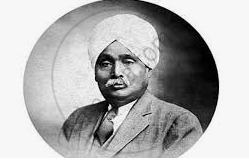Advertisements
Advertisements
प्रश्न
Bal Gangadhar Tilak was the leader of the Assertives nationalists. In this contest describe his political belief.
उत्तर
Bal Gangadhar Tilak was a’bom nationalist. He finished his studies as a law graduate. He served all his life for the cause of mother India. From the time he joined the Congress he did not agree to the spirit of mendicancy of the Congress. His political beliefs can be summed up in his own words “Swaraj is my birthright and I shall have it.” He did not agree with the Moderates who never wanted the British to go away but they pleaded for autonomy. Tilak believed in making the people self-reliant so that their national spirit could launch political agitations. He was a fearless fighter.
APPEARS IN
संबंधित प्रश्न
Name the nationalist who said ‘Swaraj is my birthright and I shall have it’. State any two of his contributions to the National Movement.
The conflict between two sections of the Congress came to surface in its Session in 1906 at Calcutta. In this context, explain the following:
The Split in the Congress
The early Congressmen were liberal in their views and programmes. This led to the rise of radical nationalists who demanded more forceful action against the British. In this context, discuss the following:
How did Tilak bring a new wave in Indian politics that was distinct from the early Congressmen?
Name the two famous journals of Bal Gangadhar Tilak
In what way was Tilak the forerunner of Gandhiji?
Which national leader Was called Sher-e-Punjab? Why was he called so?
‘Lala Lajpat Rai was a fearless nationalist and a journalist’. In this context briefly describe his contribution in the field of education.
Answer the following:

(i) Identify the persons in the picture given above.
(ii) To which section of the Congress did he belong and what was his ultimate objectives?
Answer the following:

(i) Name the person represented in the picture given alongside.
(ii) Why this person is known as the forerunner of Mahatma Gandhi.
The Indian National Movement is divided into three phases. With reference to the Second Phase of the Indian National Movement, answer the following question:
Mention any two contributions of Bal Gangadhar Tilak.
